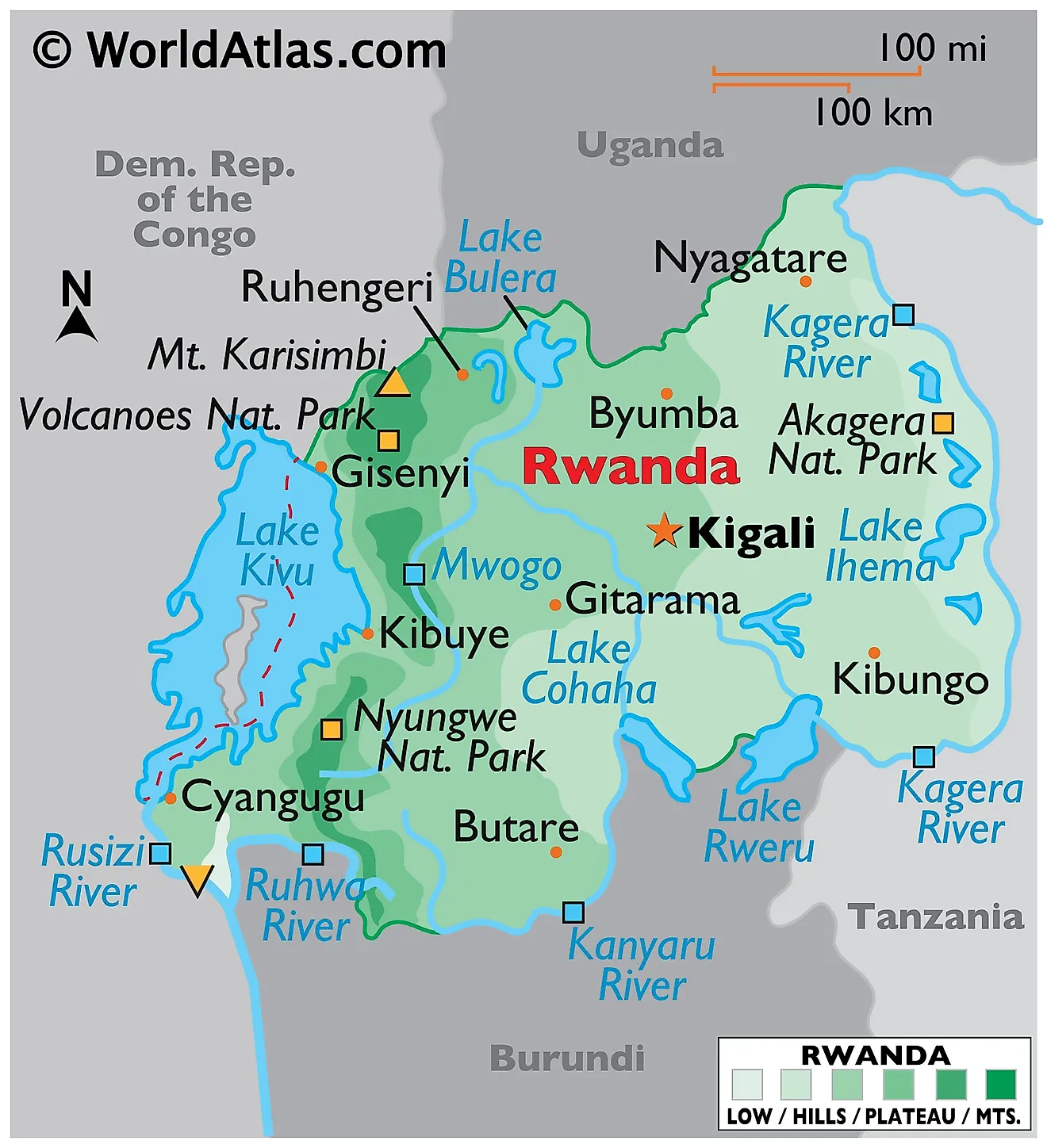Introduction of Rwanda
Introduction to Rwanda:
Rwanda is the country I have chosen to learn about during my course in geology. It is located in Central Africa with Uganda, Tanzania, Burundi and the Democratic Republic of Congo bordering it. Rwanda is known as the "land of a thousand hills," conducive to its mountainous terrain. The country's highest peak, Karisimbi, reaches nearly 15,000 ft among the Virunga Mountains, and at its lowest point sits the Rusizi River between Rwanda and the Democratic Republic of Congo. As of 2024, Rwanda houses a population of 14,094,683 people which is steadily increasing at around 2% annually.

https://www.worldatlas.com/maps/rwanda
https://www.worldometers.info/world-population/rwanda-population/#:~:text=Rwanda%202023%20population%20is%20estimated,(and%20dependencies)%20by%20population.
https://www.britannica.com/place/Ruzizi-River
https://kids.nationalgeographic.com/geography/countries/article/rwanda#:~:text=Known%20as%20the%20“land%20of,the%20Congo%2C%20flow%20through%20Rwanda.
Differences between Natural Hazard, Disaster, and Catastrophe:
A natural hazard is a naturally ocurrance that poses a threat to one’s life or property, a disaster happens in a shorter period of time and has specific criteria for deaths, number of people affected and requested assistance. While a catastrophe is a major event that negativley impacts a larger area for an extended period of time and takes a significant amount of funds and time to recover from being more significant than a natural hazard or disaster.

Welcome to class!
ReplyDelete